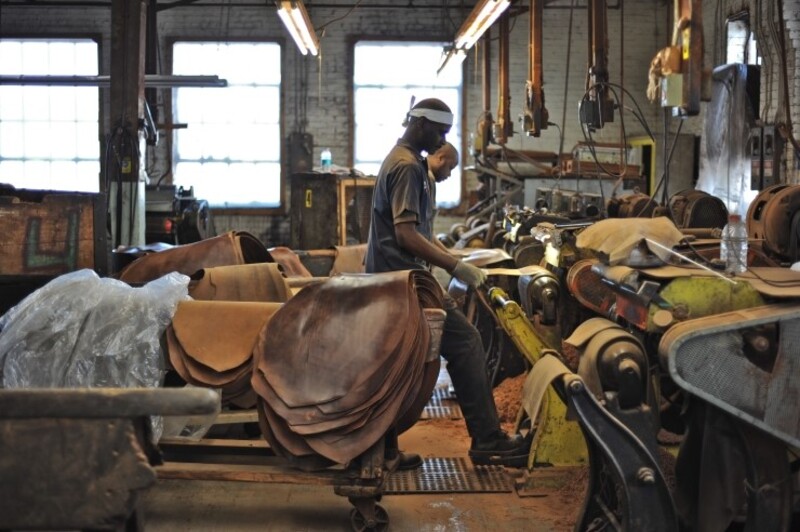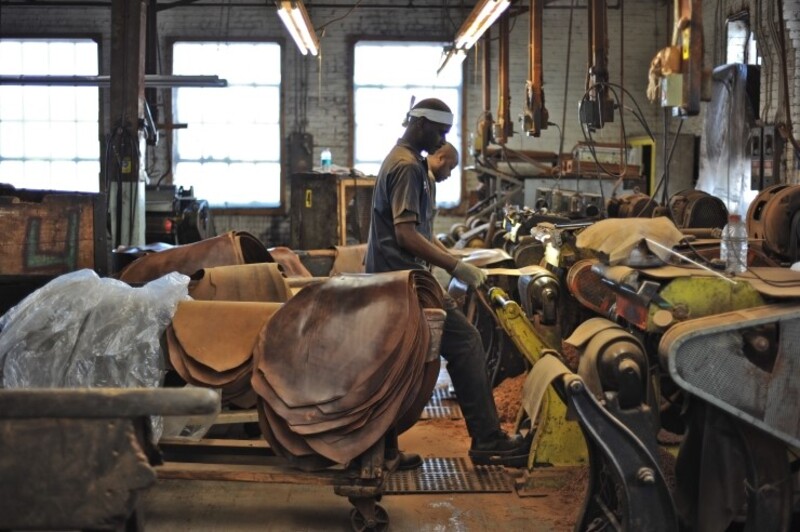Application of biotechnology to tanning process
In the 21st century, the technology of leather production is being greatly affected by the ever-increasing global environmental protection. As much as 80-90% of the total pollution generated during the tanning process is solid, liquid and gaseous wastes such as lime, sulphide, chromium, hydrogen sulphide. It is the use of enzyme replacements for chemical substances in many stages of tanning.
Application of biotechnology - fresh production method
Use of enzyme preparations is a good example of a new technology trend. It's a combination of chemistry and biology which results in products that are widely used around the world. The nature of the enzyme is protein, but not all proteins are enzymes but only proteins that are capable of catalyzing the biochemical reaction. Enzyme preparations can be used in a number of important processes in the manufacture of leather, including revitalization (the skin is cleansed and absorbs lost water in storage), hair removal (hair removal and open structure for skin), softening (removing unnecessary proteins), degreasing (removing fat from the skin):
- Refresh cycle: Enzyme preparation can remove non-collagen protein, fat between the bundles, reduce wrinkles to the skin, shorten the recovery time.
- Hair Removal - lime soaking: The conventional hair removal technology uses lime and sodium sulphide which is a major source of pollution. Enzymes help to soften the pores, then by means of hair removal machine to remove hair to reduce the amount of sodium sulphide.
- Softening step: Using enzyme preparations to remove collagen proteins, change the structure of the kidney and some physical properties of the skin.
- Grease stage: Fat in some types of skin is very large, especially pig skin, sheep... Use enzyme to grease to avoid releasing solvents or detergents into the environment.
Until now, the use of enzyme preparations in production has been difficult, although many studies use them in tanning procedures. The amount of commercial enzyme is not much, the reaction of enzyme catalyst depends on many factors such as concentration of E, nature and concentration of reactants, temperature, pH of the environment, metal ions, inorganic and organic substances...
The selection of enzyme preparations should be suitable for each stage of freshening, hair removal, softening after lime soaking, softening in acidic solution, generalizing the effects in technology and using the experimental method to find optimum specifications. To apply enzyme preparations in tanning, the subject also studied the manufacture of semi-automatic garmentthat can control the speed, rotation time, rest, temperature, the amount of water and hair shaver after using a waxing enzyme preparation.
Application of biotechnology - future direction
It is possible to see that tanning consists of reversible methods such as preservation - fresh, lime soaking - lime removal,... The ecological imbalance is the result of this reversible production. Therefore, tanning technology should be returned to one-dimensional methods, each of which includes special effects that do not need to be reversed. Using biocatalysts to replace chemicals, putting the concept of biotechnology in leather production into practice is the future direction for the tanning industry.










